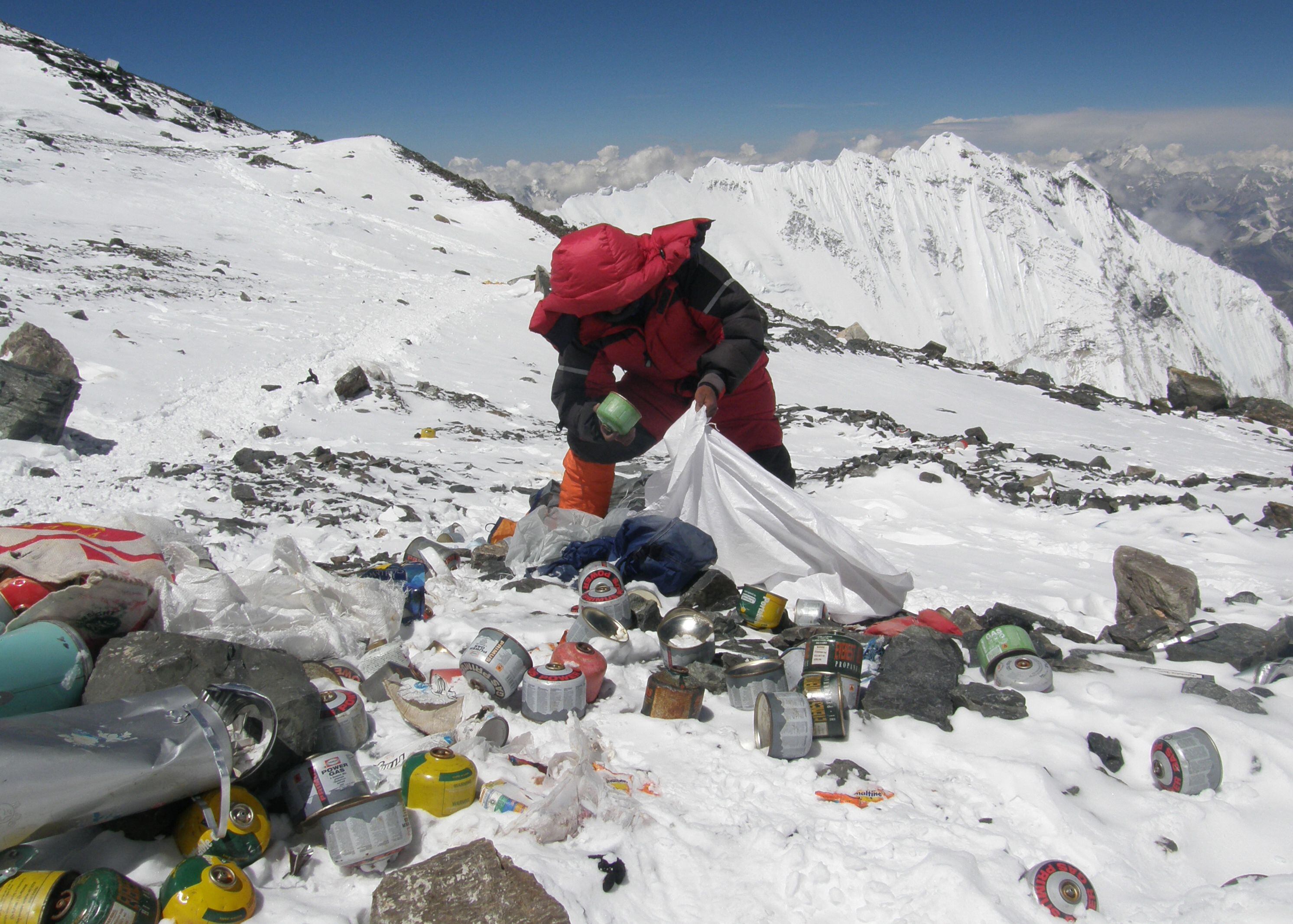In a world full of conflict and tension, the most frequently reported drone news includes scenes of explosions, death and terror. But not in Nepal. Currently, the rural municipality of Khumbu Pasang has deployed unmanned aircraft over the highest parts of the Himalayas with a rather uplifting objective: to clear the area of trash and debris. Everestthe highest peak on the planet.
TO LOOK: What is the Fujian like, China’s new and largest aircraft carrier with which it intends to get closer to the United States?
The drones flying over the Asian mountain range are part of a project that seeks to collect ten tons of waste that shines on the ice as irrefutable proof that there is no place that humans cannot contaminate.
This is the first time that Nepalese authorities have used drones to clean the mountain. For years, the gigantic task of removing waste fell to the Sherpas (an ethnic group that lives in the country’s mountainous regions) and members of the army, who had to cross the dangerous Khumbu Icefall carrying large amounts of trash with them.
“We want to ease the burden on Sherpas who risk their lives transporting garbage. Even removing a small piece of chocolate can be a challenging task at that altitude,” Jagat Prasad Bhusal, administrative director of the municipality that oversees the Nepalese side of the mountain, told the American magazine “Outside”.
The person responsible stated that the use of drones is carried out on a pilot basis and that, if successful, these aircraft will be fully used to transport waste from 6,400 meters of altitude, where Campo II is located, next season.
The trash that accumulates on Everest every year has caused many to refer to it as the largest trash dump in the world. The more adventurers visit, the more waste they leave behind.
The crisis reached such a worrying level that the Nepalese government decided in 2014 to force climbers to descend the peak with at least 8 kg of trash or forfeit a $4,000 deposit if they failed to comply. The mandatory use of chips to locate climbers was also established.
One of the most recent guidelines stipulates that those on expeditions to the area must collect their feces and take them to base camp for processing.
In addition to waste and remains from camps, the highest parts of the mountain hide the bodies of at least five people, which must be recovered during the cleaning campaign.
In 2023, Nepal reached an agreement with The NeverRest Project, a company specializing in environmental engineering, to mobilize mountain experts and climbers to end waste deposited on Everest.
Although Nepal has announced many rules for mountaineering in the past, several have not been properly implemented, notes the BBC. “One of the main reasons is the absence of liaison officers on the ground. There are supposedly government officials with expedition teams at the base camps, but many have been criticized for not showing up,” he says.
The problem of waste in hard-to-reach places, such as Everest and other Himalayan peaks, has led many experts to consider drones as a solution.

An initiative that has attracted attention is the one proposed by the British start-up Ellipsis Earth. Using drones equipped with cameras, Ellipsis maps the location of plastic pollution and collects information that could be key to ending waste.
Ellipsis uses image recognition and computer software that can identify the type and size of plastic and even the origin or brand of the waste. Another way to use technology with an environmental focus.
Source: Elcomercio
I am Jack Morton and I work in 24 News Recorder. I mostly cover world news and I have also authored 24 news recorder. I find this work highly interesting and it allows me to keep up with current events happening around the world.

:quality(75)/cloudfront-us-east-1.images.arcpublishing.com/elcomercio/SLSM2XB4FZGS5AH7Y6M2GZ7YTA.jpg)

:quality(75)/cloudfront-us-east-1.images.arcpublishing.com/elcomercio/7V2Q6F3HZ5CHVLDO2LFINKUWCI.jpg)

:quality(75)/cloudfront-us-east-1.images.arcpublishing.com/elcomercio/KN76ID4A6NE4PFE4T2X6JP662A.jpg)

